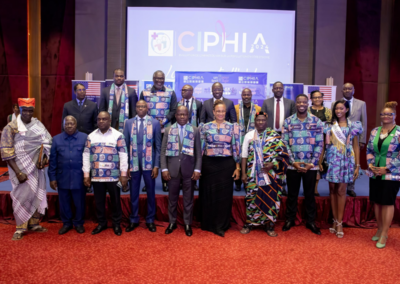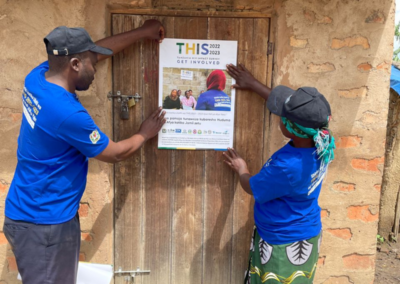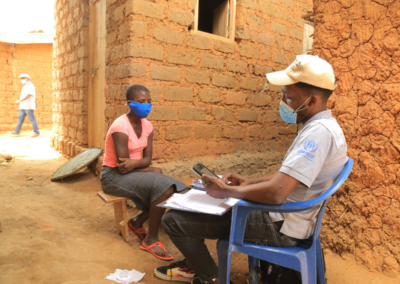The recently released results of a new nationwide HIV survey implemented in Malawi offer evidence of continued progress toward controlling the longstanding epidemic in the country – and provide guidance toward further steps that need to be taken.
Launched in January 2020, the Malawi Population-based HIV Impact Assessment (MPHIA 2020-21) measured the impact of the national HIV response in Malawi. Among 30,049 eligible adults 15 years and older, 22,662 were tested for HIV and interviewed about HIV prevention, care and treatment services uptake in Malawi. MPHIA offered HIV counseling and testing with immediate return of results.
MPHIA 2020-2021 was led by the Government of Malawi through the Ministry of Health and the National AIDS Commission. The survey was implemented by ICAP at Columbia University with technical support from the US Centers for Disease Control and Prevention (CDC) and with funding from the United States President’s Emergency Plan for AIDS Relief (PEPFAR). The Government of Malawi, local civil society organizations, and international development partners participated in steering committees and technical working groups during study implementation.
The survey found that HIV prevalence among adults was 8.9 percent, indicating that approximately 946,000 adults are living with HIV in Malawi. HIV prevalence was twice as high among women compared to men in each five-year age group between ages 20 and 39. Generally, HIV prevalence increased with age until the late 40s for women and the early 50s for men.
Based on the survey results, 88.3 percent of adults living with HIV were aware of their HIV-positive status. Among adults living with HIV who were aware of their status, 97.9 percent were on antiretroviral treatment (ART), and among adults on ART, 96.9 percent had suppressed viral loads.
These results indicate that Malawi has met the second and third UNAIDS 95-95-95 targets before the 2025 target date. However, the first 95 target – ensuring that 95 percent of all individuals living with HIV are aware of their status – remains below that threshold.
“These results show that the national program has made great progress in managing HIV and which areas will benefit from an increased focus in the future,” said Mansoor Farahani, ICAP’s technical lead for MPHIA 2020-21. “Concentrating on HIV education, sexual risk reduction, and female empowerment has the potential to prevent new HIV infections among young women effectively.”
Among all adults living with HIV in the country, irrespective of knowledge of HIV positive status, 87.3 percent had viral load suppression (VLS), suggesting that Malawi is well-positioned to achieve the UNAIDS goal of ending the AIDS epidemic in the country by 2030. VLS prevalence, however, was lower among younger adults.
“Improvements in timely diagnosis, linkage to care, and retention on ART, particularly among younger adults, are critical factors to ending the AIDS epidemic,” said Felix Kayigamba, ICAP country director in Malawi.
MPHIA 2020-21 was preceded by MPHIA 2015-16, the first survey in Malawi to measure national HIV incidence and prevalence of viral load suppression, as well as HIV prevalence in children. At the time of MPHIA 2015-16, 76.8 percent of people living with HIV aged 15 to 64 years were aware of their HIV-positive status. Among those aware of their HIV status, 91.4 percent were on ART, and 91.3 percent of those on ART were virally suppressed.
“PHIA surveys continue to provide critical data and insight into the status of the global HIV response,” said David Hoos, MD, MPH, PHIA project director. “These surveys, repeated over time, can continue to inform national programs on where additional attention is needed.”











